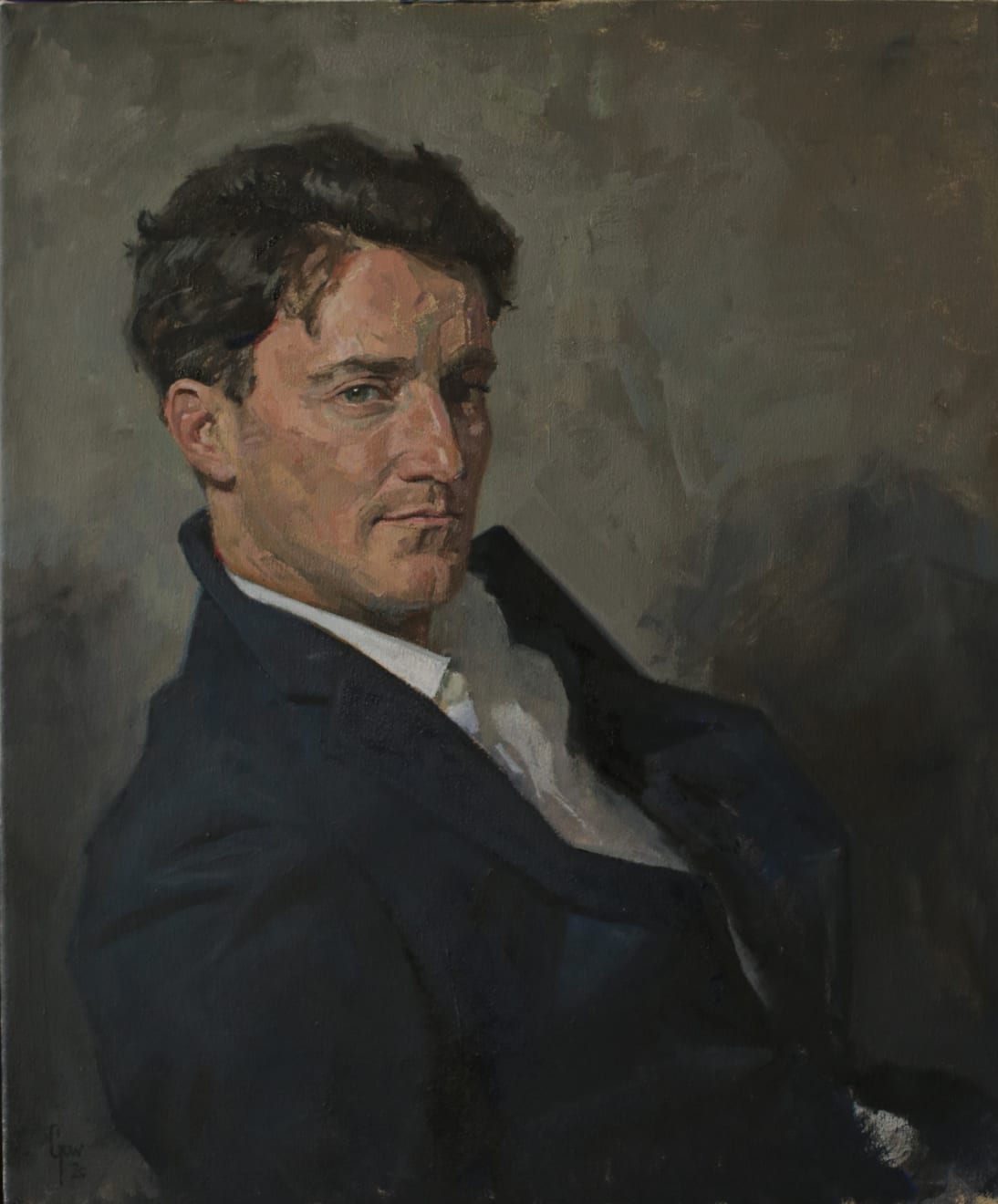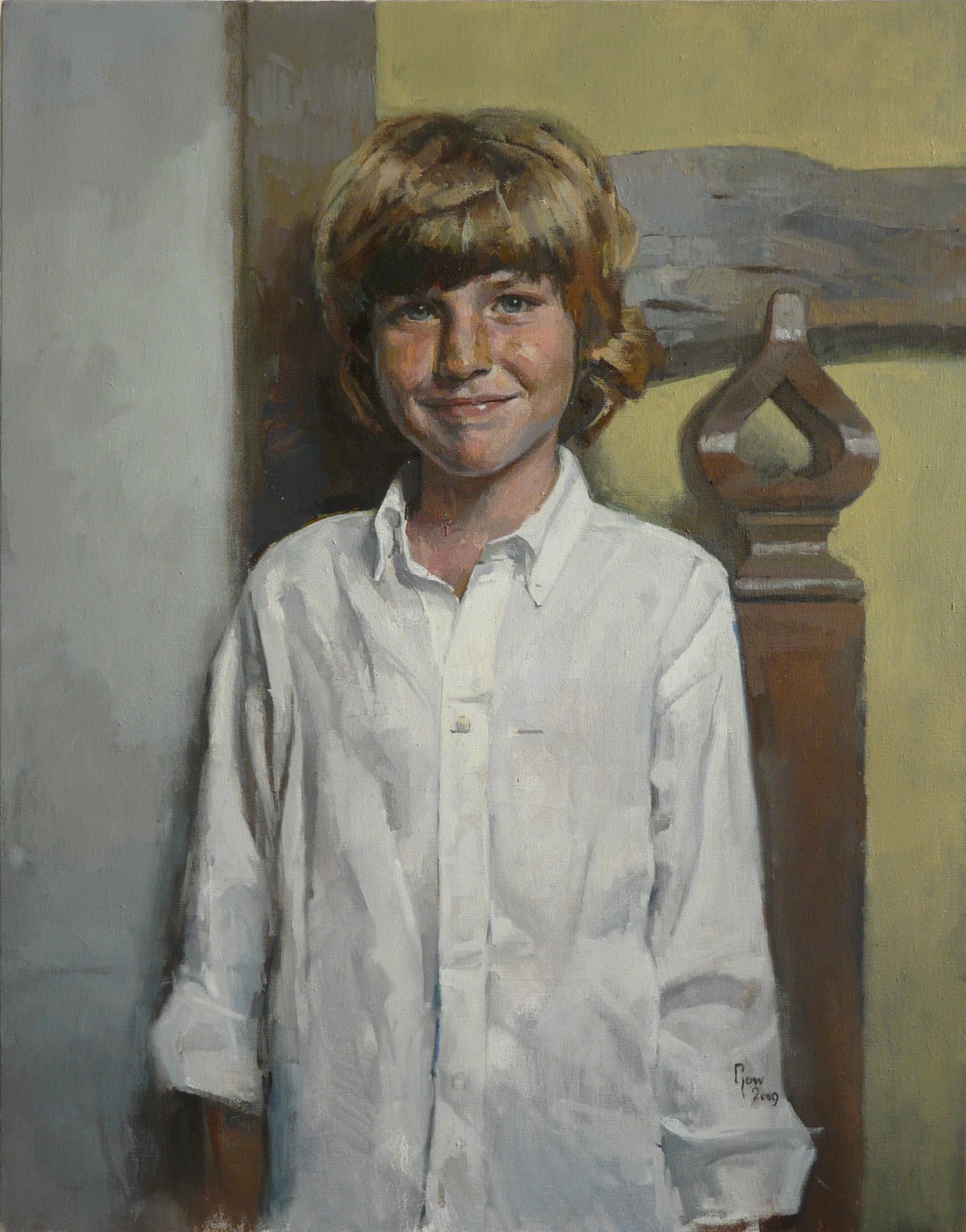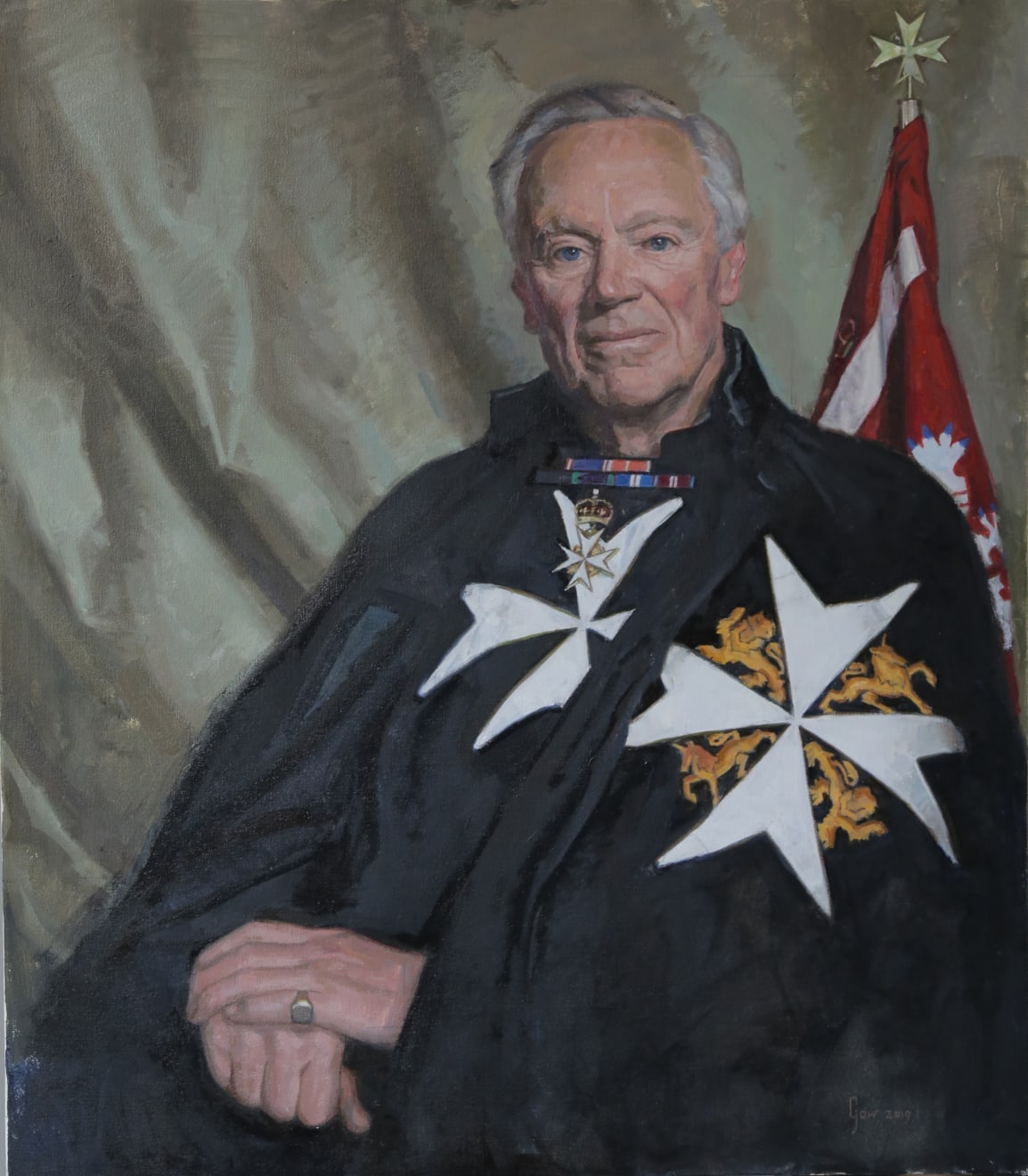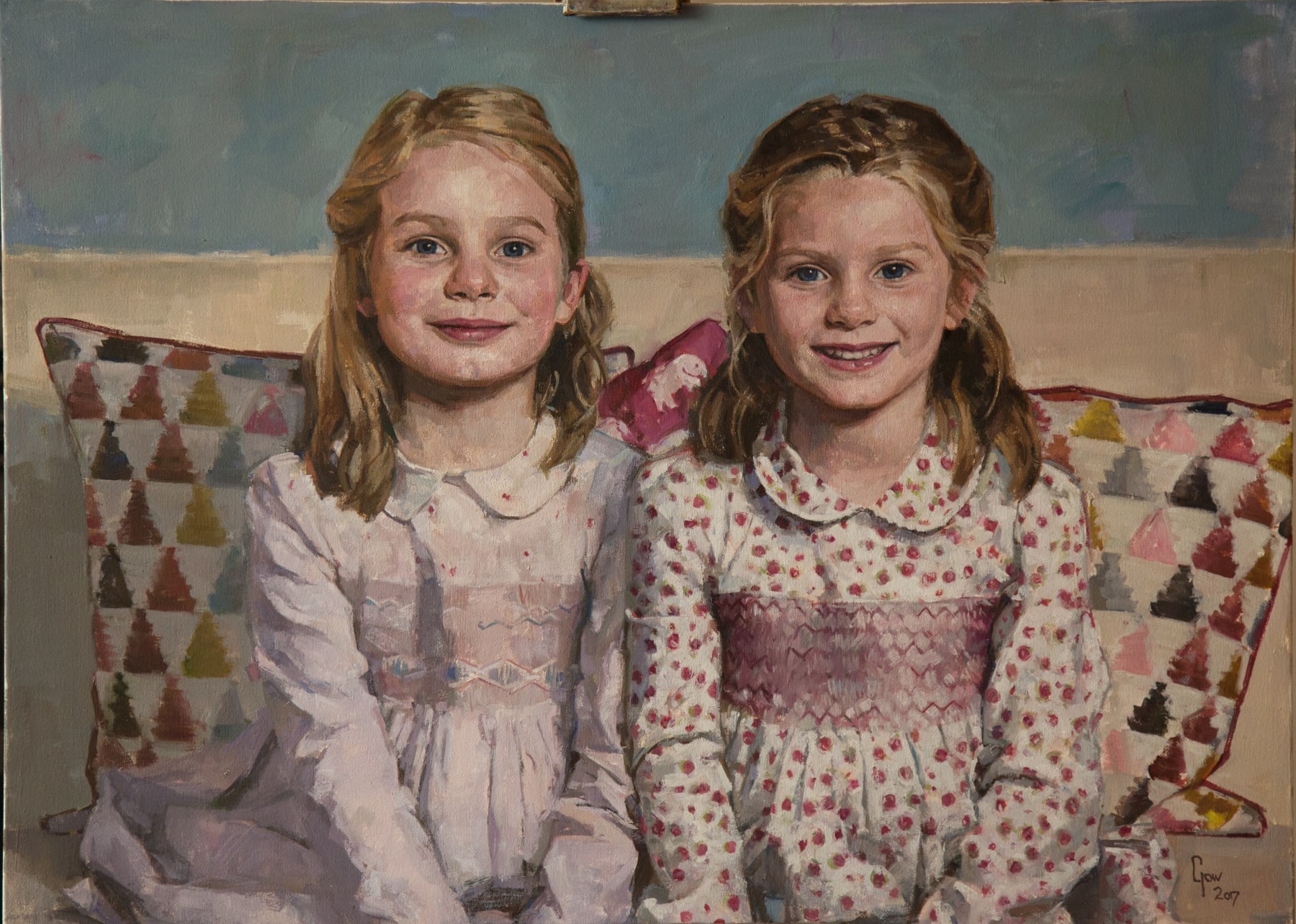In an enlightening dialogue, Kei London and the celebrated portrait painter Andrew Gow discussed the profound impact and personal philosophies behind portrait painting.
Andrew highlighted the timeless essence of portrait art, noting its ability to capture and immortalise moments beyond what photography can offer. He referenced historical figures like Van Eyck to illustrate the enduring legacy of painted portraits.
Exploring his personal approach, Andrew conveyed a profound sense of duty towards the individuals he portrays as well as towards the artistic process itself. He aims for realism infused with creative interpretation, balancing true representation with the painting's expressive potential. The interaction of colours and the delicate application of brushstrokes are key to his technique, ensuring each portrait is both realistic and unmistakeably a painting.
The conversation then explored the significance of the portrait's setting and size, emphasising the collaboration between artist and client to create a piece that resonates with the subject's identity and fits within their living space.
Andrew shared insights into the complex process of creating portraits, from negotiating with busy or posthumous subjects to adapting to the unique demands of each commission. His experience with notable figures, such as Ratan Tata and Cardinal Pell, underscored the importance of preparation, adaptability, and the artist-subject interaction in capturing the essence of the portrait.
On future directions, Andrew conveyed contentment with his current style but expressed interest in exploring quicker, life-painted portraits and travelling for commissions. He also offered advice to aspiring portrait painters, encouraging them to study the works of masters, practice relentlessly, and remain true to their artistic interests.
The discussion concluded with reflections on the relevance of traditional portrait painting in the digital age. Andrew argued that despite technological advancements, painted portraits' tangible, enduring nature holds significant value, offering a connection to humanity that digital media cannot replicate.
Here are some key highlights and notable quotes:
- On the Significance of Portraiture: Gow explained the unique ability of portraiture to capture and immortalise a moment, stating, "It's the best visual way of capturing somebody, like capturing a memory of them...It captures the image of somebody and it saves it in a way that nothing else we have does."
- Personal Philosophy on Portrait Painting: Andrew Gow delves into his approach, emphasising realism balanced with artistic interpretation. "For me, it has to be kind, it has to be real... There's a point where you create an image that feels real but yet is also still a painting."
- The Role of Setting and Size in Portraiture: Gow highlighted the collaborative process in deciding these aspects, "A portrait is like a biography...adding details is adding, is creating a visual story about the person."
- Adapting to Subjects' Needs: Discussing his flexibility in working with subjects under various conditions, Gow remarked, "I can make a portrait under those circumstances...the initial meeting and getting a feel of, and seeing the person in real life is important."
- Future Directions and Excitements: "I think my portraits are pretty much as they're going to be... I'd quite like to get more comfortable painting portraits a bit more quickly," Gow shared, expressing a desire for more live portrait sessions.
- Advice to Aspiring Portrait Painters: Gow encouraged, "Copy people that you think are really good, and then just practice...You get better in the doing."
- Reflections on the Digital Age: Despite technological advances, Gow believes in the enduring value of traditional painting. "Painting and particularly portrait painting is the best way we have of engaging with a sense of immortality," he argued, underscoring the tangible connection to humanity that paintings provide over digital experiences.
Full Interview:
In a revealing interview with Kei London, portrait artist Andrew Gow explores the depths of portrait painting, offering a glimpse into his artistic ethos and the timeless relevance of his craft.
Q: Could you explain the role of portraiture in society and why it might be important for someone to commission a portrait?
Andrew: Portraiture offers a unique way to capture and memorialise a person in a specific moment and setting, something more profound than photography can achieve. It's the most durable method, capable of outlasting even centuries-old techniques, as seen in the works of masters like Van Eyck. Essentially, a portrait saves and preserves a person's visual memory in a uniquely precious way.
Q: What is your philosophy when it comes to painting portraits? What are you striving to capture in your work?
Andrew: My responsibility is to the person commissioning the portrait and to the sitter to capture their truest likeness in the most honest and refined way. I seek to make the image feel real yet still recognisable as a painting without overly dramatic expression for artistic effect. It's about subtly introducing interesting elements that don't overshadow the subject, manipulating the colour to enhance the portrait while revealing the brushstrokes up close.
Q: How do you decide on the setting and size of a portrait, and what kind of interaction do you have with the client before beginning a commission?
Andrew: The setting is a collaborative decision that adds to the narrative, similar to writing a visual biography. The size depends on the client's budget and the space where the portrait will be displayed. I work with the client to determine the best fit for their story and space, painting with precision to fit the portrait perfectly into their life and its intended environment.
Q: If a stranger approached you for a portrait, how would you approach the process, especially if you were unfamiliar with the person?
Andrew: Regardless of whether the subject is known to me or not, I adapt to the project's needs. For instance, with busy individuals or posthumous portraits, I work with available photographs. Ideally, I like to meet the person, discuss their expectations, and understand the character they want the portrait to convey. Sitting for the portrait is preferable if time allows, but I can work solely from photographs if necessary.
Q: How has your approach to portrait painting evolved, and what experiences have shaped this progression?
Andrew: Training in Florence, with its strict methods, taught me a lot, but I've since adapted to modern needs, using studio lights and various techniques to capture my subjects. Handling different people and situations, from high-profile figures to children, has taught me the importance of the artist-subject relationship, which is captured in the expression of each portrait.
Q: Looking ahead, what new aspects of portrait painting are you looking to explore?
Andrew: After two decades, I'm content with my style but eager to work on quicker, life-painted portraits and travel more for my work. However, my main goal is to continue improving with each portrait I paint.
Q: What advice would you give to up-and-coming portrait painters seeking to find their style and voice?
Andrew: Understand your interests, study other artists, and don't be afraid to emulate their techniques initially. Portrait painting is a rigorous art form that requires constant practice and never becoming complacent.
Q: Could you tell us about the relationship between your portrait and non-portrait work?
Andrew: My personal work stands in contrast to my commissioned portraits. While portraits celebrate individuals within society, my personal work allows me to express myself freely, engaging with and critiquing societal narratives through a different, more expressive painting style.
Q: Finally, how do you come up with ideas for new artworks, and what's your creative process like?
Andrew: Ideas form organically, often inspired by other artworks, literature, or personal reflections. I note down interesting concepts, sketch out compositions, and sometimes start from a particular image or sculpture that strikes me. This leads to larger, more detailed paintings as I further refine the concept.
Q: With the rise of digital art and AR, how do you think these will affect the future of portrait painting?
Andrew: Technology, like photography before it, has changed the art landscape, but painting has an enduring quality that can't be replicated digitally. Paintings carry a physical presence, a record of the artist's interaction with the subject, which will always hold a precious place in human experience.













